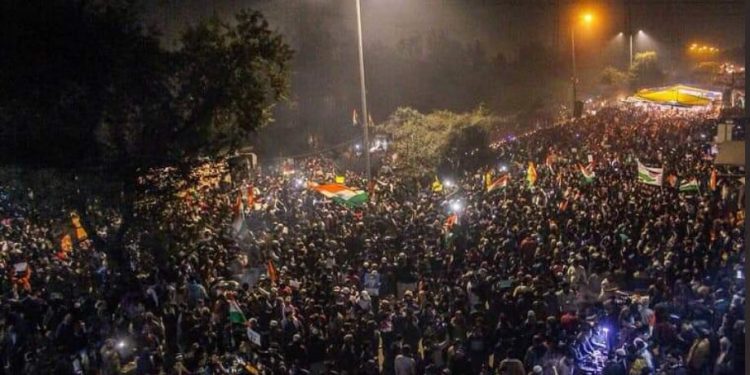New Delhi: Every night, a few thousand people gather at the heart of South Delhi district to protest against an act of government, which they feel will do more harm than good.
Among other issues, they see the new citizenship law as violative of the Fundamental Rights of Equality, Life and Liberty, as mentioned in the Constitution. And they have been doing this for over a month now, braving one of the coldest winters the national capital has witnessed in many years.
From whatever angle you look at it, in recent times few mass protests have caused such a stir as the protest at Shaheen Bagh, a Muslim dominated neighbourhood near Jamia Millia Islamia, and it has had a ripple effect across the country.
At the forefront of the protest inside the around 100m long temporary tent with a stage at one end are women, mostly from the locality, spearheading the 24×7 movement on Road No. 13A — the 2.5km-long stretch connecting Delhi and Noida, which has been closed since December 15.
Juggling between household chores and other duties, the primarily burqa-clad women have been present in large numbers from the day the protests began, filling up the tent as well the staircases of the lines of shops on one side of the road, which remain shut for a month now. We have their support, claim the protesters, mainly from Shaheen Bagh, joined by many more from across the city, and outside it.
“We are also harassed by the road closure, we also face difficulty as the shops are closed. But we are here against all odds mainly for our children, as we believe the latest citizenship law and the proposed nationwide NRC (National Register of Citizens) is a threat.
“What paper do they have to show to prove that for generations they have lived in this country as much as anyone else,” said a woman protester, who did not wish to be named, echoing the sentiments of many around her.
The protest at Shaheen Bagh began with the passage of the Citizenship (Amendment) Act in December last year, and the ensuing police intervention against students at Jamia Millia Islamia and Aligarh Muslim University on December 15. Growing in size by the day, it has now become the longest ongoing protest against CAA-NRC-NPR, triggering similar movements in different parts of the country, from Kolkata to Prayagraj to Bhopal and Pune and more.
“It started with a few people and has grown by leaps over a short period of time. Our fight is to save the Constitution. You can”t make religion a condition to grant anyone citizenship. Also, we strongly condemn the violence that has been unleashed on students. We will to continue our protest, stopping midway is not an option anymore,” said another woman protester.
One may agree with their views, one may not. But one can”t miss the striking scenes in and around the makeshift tent covered with artwork and poster.
The Tricolour is fluttering everywhere — from the stage to the sideways to atop two 50-feet tall high-voltage telephone towers on the Noida side of the protest stretch. Children of protesting mothers are being engaged in creating posters on issues ranging beyond the present political discourse. The place is thronged by people from different walks of life, from housewives to students to professionals to selfie seekers — people who live in slums, as well as affluent localities.
The spirit at Shaheen Bagh seems to be pretty high, though the police on Friday night made a fresh appeal to the protesters to cooperate and help clear the Kalindi Kunj-Shaheen Bagh stretch in the “larger public interest”.
The appeal came soon after a Delhi High Court bench, hearing a petition filed by the Federation of Sarita Vihar Residents Welfare Association, directed Delhi Police to look into the issue relating to the blockage of the Delhi-Noida connecting road.
What course the Shaheen Bagh protest takes from here on, one will have to wait and see. But the buzz created by the unusually long sit-in demonstration will reverberate for a long time.






































